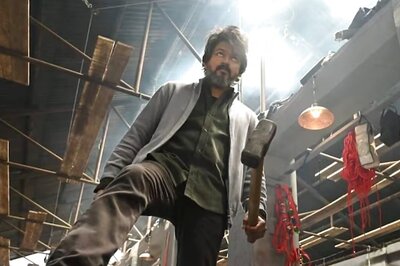
views
Sriharikota (Andhra Pradesh): Aimed at taking a giant leap in its space programme, India will on Monday launch its second moon mission Chandrayaan 2 onboard its heavy-lift rocket GSLV-MkIII from the spaceport here, to land a rover near the unexplored lunar southern pole.
The lift-off of the three-component spacecraft weighing 3,850 kg and comprising an orbiter, the lander and the rover has been scheduled for 2:51 am from the Satish Dhawan Space Centre.
Billed as the most complex and prestigious mission ever undertaken by the ISRO since its inception, Chandrayaan 2 will make India the fourth country to soft land on the lunar surface after Russia, the United States and China.
Indicating the challenges involved in soft landing, which will feature a series of critical manoeuvres by scientists, ISRO Chairman K Sivan said they will undergo about "15 minutes of terror (filled moments)”.
After offering prayers at the hill shrine of Lord Venkateshwara at Tirumala, Sivan on Saturday said all preparations for Chandrayaan-2 were on for the launch.
"Chandrayaan-2 is the next leap in technology as we attempt to soft land close to south pole of Moon. The soft landing is extremely complex and we will experience approximately 15 minutes of terror," he said.
Eleven years after its successful first lunar mission, the Indian Space Research Organisation (ISRO) will launch the Rs 978 crore Chandrayan-2 onboard Geosynchronous Launch Vehicle GSLV-MkIII on a voyage which will then take 54 days to accomplish the task of landing on the Moon through meticulously planned orbital phases.
ISRO, which has planned for the landing around September 6, said the mission aims at going where no other nation has so far forayed - the lunar south pole and seek to improve understanding of the moon which could lead to discoveries that will benefit India and humanity as a whole.
The Chandrayaan-2 has 13 payloads in total with eight of them in the orbiter, three payloads in Vikram and two in Pragyan. Five payloads are from India, three from Europe, two from the US and one from Bulgaria.
A Laser Retroreflector Array (LRA) of NASA is among the payloads and is aimed at understanding dynamics of Earth's Moon system and deriving clues on Lunar interior.
President Ram Nath Kovind will witness the launch at Sriharikota. About 16 minutes after the lift-off, the GSLV MkIII will inject Chandrayan-2 into 170 x 40400 kms Earth orbit.
From then onwards, the mission will witness a series of manoeuvres by scientists to carry out different phases of the mission. For the first 17 days from lift-off, the spacecraft will be in Earth-bound phase before its orbit is finally raised to over 1.05 lakh km.
After that, it will be nudged into the lunar transfer trajectory taking it to the proximity of moon in the next two days. Then gradually over the next few days it will be brought to 100 X 100 km circular orbit when the lander will separate and after another few days of orbiting it will make a soft landing at a chosen place on lunar surface.
Through Chandrayaan-2, in which home grown technology is deployed, scientists aim to expand India's footprint in space, shed light on unexplored section of Moon-- the South Pole region, enhance knowledge about space, stimulate advancement of technology and promote global alliances.
It is first expedition by ISRO to attempt a soft landing on the lunar surface equipped with "home grown" technology. It would also be the first mission to explore the lunar.


















Comments
0 comment